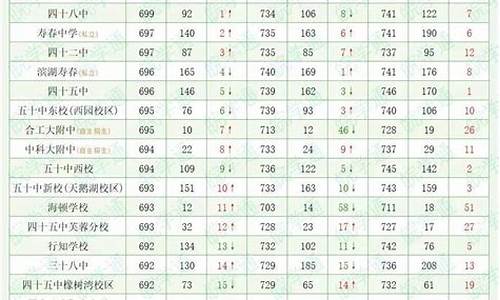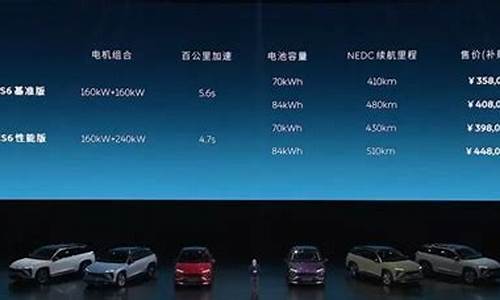aim用法_aim用法搭配
1.aim at和aim to 的区别及运用

针对用英语说是aim。
一、发音英:[/e?m/];美:[/e?m/]
二、中文翻译n. 目标;目的;瞄准
v. 瞄准;;打算;针对
三、形式现在分词:aiming
过去式:aimed
过去分词:aimed
四、短语搭配aim at 瞄准;目标在于;针对
take aim 瞄准
aim for 力求;设定目标
五、双语例句1. The aim of the game is to collect all the stars.
这个游戏的目标是收集所有的星星。
2. He aimed the gun at the target.
他把枪瞄准了目标。
3. What do you aim to achieve by doing this?
你做这个的目的是什么?
4. We always aim for excellence.
我们始终追求卓越。
5. They're aiming at reducing costs by 10%.
他们的目标是将成本降低10%。
6. The program is aimed at adults who can't read.?
这个针对的是不会读书的成人。
六、用法1. "Aim" 既可以作为名词,表示目标、目的,也可以作为动词,表示瞄准、、打算等,也可以表示“针对”某个人群或事物。
2. "Aim" 作为名词时,常常用在表示目标或目的的场合,后面可跟of或者for。例如:The aim of the project is to provide clean water. (该项目的目标是提供干净的水。)
3. "Aim" 作为动词时,一般后面可以接at、for等介词,后面接名词、代词或者动名词作宾语。例如:He aimed the arrow at the target. (他将箭瞄准了目标。)
4. "Aim" 的过去式和过去分词形式是aimed,现在分词形式是aiming。例如:They aimed to finish the project by the end of the month. (他们在月底之前完成这个项目。)
5. 当 "aim" 表示“针对”时,常与at搭配,后接表示人或事物的名词,表示目标或对准的对象。例如:The new policy is aimed at helping the poor. (新的政策旨在帮助贫困人口。)
6. "Aim" 可以和一些与目标、目的、相关的名词或动词搭配,如 "goal"(目标)、"objective"(目标)、"plan"()等。例如:We should always aim high in life. (我们在生活中应该总是立志高远。)
aim at和aim to 的区别及运用
一、词义不同
1、aim at 后接名词,强调瞄准、针对,本义用于开枪射击的瞄准的具体现象,也可用于抽象的针对某目标,同aim for +目标的用法,at本身有“朝、向”的含义,强调针对目标的方向性。
He aimed at the target, fired and missed it.?
他瞄准目标开火,却未打中。
2、aim to后接动词,意思是旨在干某事,强调志在达成某事。
It is now our aim to set up a factory.?
我们现在的目的是创办一座工厂。?
3、aim for 后接表示目标的名词,意思是以…为目标。for本身有“为了”的含义,强调作为、打算的目的性。
Rather?than?being?“nice”,?I?think?you?should?aim?for?being?assertive?and?honest.?
我认为你的目标应该是果断和真诚而不是做个“老好人”。
二、后面所接词性不同?
1、aim at 后接动名词,或者接名词。构成aim at doing sth.或者 aim at sth 固定结构,意思是瞄准、指望,针对 。如:
Businesses will he to aim at long-term growth, not the present profit.?
商业发展应该旨在追求长期的发展,而不是现在的利益。
2、aim to后接动词原形,构成aim to do sth 固定结构,意思是想要做某事,立志要做。如:
He aim to streamline the office.?
他的目标是提高办公室的工作效率。
3、aim for 以…为目标。 通常后接名词。例:
Your whole parenting has aimed?for?this moment.
你的教育目标就是这一刻。
三、用法不同
1 . aim at:用于表示强调瞄准,针对,后接名词、动名词时需要用aim at。如:
When the teacher said that there was a lazy boy in the class, he was aiming at John.?
当老师说班上有个不用功的孩子时,他是针对约翰说的。
2、aim to 用于强调想要做某事,后接动词原形, aim to do sth 意思是立志要做某事。如:
She aimed to please her boss.?
她想要讨好她的老板。
We aim to solve the problem.?
我们力求要解决这个问题。
3、aim for,后接名词, 用于强调希望达到某个目标。如:
We should aim for the best results.?
我们要力争获得最好的结果。
"Aim at" 强调着眼于特定的目标或目的,瞄准某个对象或方向。而"Aim to" 强调打算、或努力去实现某个目标或愿望,追求未来的目标或行动。
大家可以先看下面的表格了解一下 aim at和aim to 吧:
aim at和aim to 的区别:区别1:含义和重点不同"aim at" 的重点是在进行某种行动或时,瞄准特定目标或对象。
"aim to" 的重点是打算或去实现某事,描述具体的目标或。
例子:They aim at reducing carbon emissions by 20% within the next year.(他们的目标是在明年内将碳排放减少20%。)
Our company aims to launch a new product line by the end of this quarter.(我们的公司在本季度末推出新产品线。)
区别2:动词结构不同"aim at" 后面通常跟名词或代词作宾语。
"aim to" 后面通常跟动词不定式作宾语。
例子:The archer aims at the target.(弓箭手瞄准目标。)
The organization aims to promote education in rural areas.(该组织旨在推广农村地区的教育。)
区别3:使用场景不同"aim at" 更常用于描述针对性的行动、或打击。
"aim to" 更常用于表达打算、或达成的目标。
例子:The 's new policies aim at reducing poverty and unemployment.(的新政策旨在减少贫困和失业。)
She aims to become a successful entrepreneur in the tech industry.(她打算在科技行业成为一名成功的企业家。)
区别4:时态和语态不同"aim at" 可以用于各种时态和语态。
"aim to" 通常用于一般现在时或一般将来时,并且不常用于被动语态。
例子:The detectives aim at solving the mystery.(们致力于解决这个谜团。)
Our team aims to finish the project before the deadline.(我们的团队打算在截止日期之前完成这个项目。)
声明:本站所有文章资源内容,如无特殊说明或标注,均为采集网络资源。如若本站内容侵犯了原著者的合法权益,可联系本站删除。












